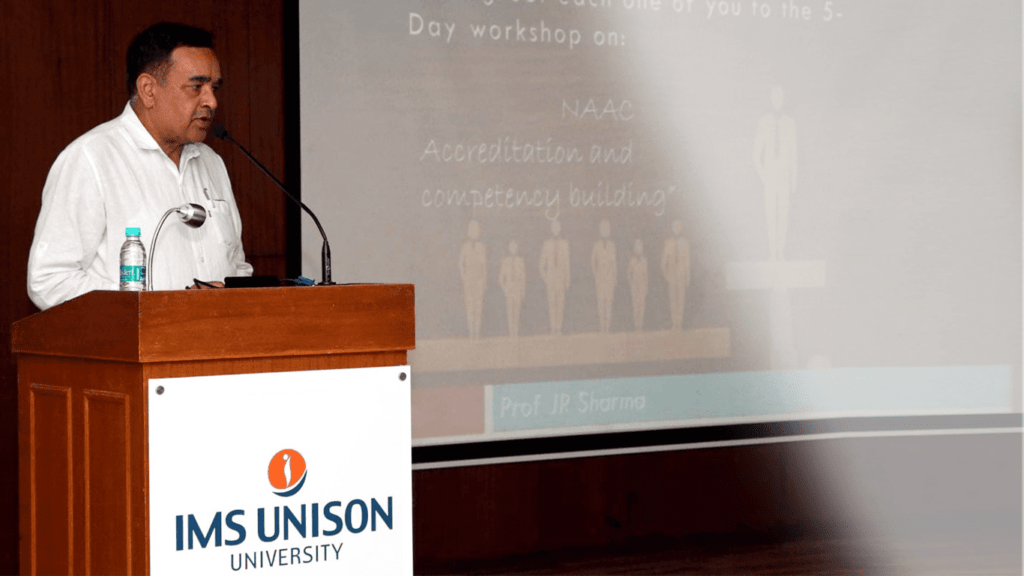No one likes Audit and Auditors. It is a human nature, not to get grilled and told point-blank, ‘look, this is not good’, ‘that is not good’, ‘why you did this’ and ‘why not that’. Moreover, most institutes do AAA, just as an ‘eye-wash’ exercise, only because it is a requirement of the NAAC criterion 6. Rarely anyone realises its huge role of fortifying the quality system and the deep impact it has on the ranking and accreditation readiness of an institute.
Well, if your IQAC members are somewhat clueless and don’t know how AAA should be done, at the end of the audit, your own faculty might brand them as ‘useless time-wasting arrogant inspectors’ worth no value to the institute. So, let us see, what is that ‘doing rightly’ means which could build a strong image of your IQAC team, internally.
One of the functions of IQAC is ‘standard setting’. What are you auditing, if you don’t have benchmarks to assess the current status? How will you grade an activity, a process or system on a given scale without comparing it with a set standard? Before you begin the process of audit, please go to the drawing board and set standards for every tiny central facility, academic and admin support unit. Of the 123 universities I have intensively interacted till date, hardly any, met this critical basic parameters of AAA assessment.
Step:1 Prepare an SOP for the AAA. Include, ‘Objectives’ Pre-Audit Process’, ‘Conduct Methodology’, ‘Who can be Auditors’, ‘ Manual of Standards/Benchmarks’, ‘Audit Formats’, ‘Data templates’ ‘Role of various Key Resource persons’, ‘Compilation of Report’ ‘Opening and Exit Meeting.
Step 2 Break-down audit by grouping institute into Central facilities, Schools, Departments and Admin Units.
* Step 3* Call for the readiness of data of various criteria of assessment on the standard formats by a fixed date at the audit site along with supporting documents.
Data should be forwarded by the constituent Departments of the School to their respective Schools well in advance for the Schools to collate and present with filter for each constituent Department. Since Standalone Departments(not part of a School) are to be audited separately, they can keep the data organised with them. Forwarding of data to audit team or IQAC at this stage rarely serves a purpose.
However, once data is audited, it must be forwarded to IQAC to help them compile the same to arrive at the university data.
Step 4 IQAC to ensure that criteria of AAA to include but not limited to (a) NAAC, NBA and any other criteria of foreign accreditation planned (b) NIRF and foreign ranking bodies criteria as planned (c) Regulatory bodies current notifications compliances (d) Own institute’s exclusive standards set for various initiatives, activities and processes. If your AAA includes all of above, you can safely say, you are truly enabling institute’s empowering audit work. Simply including NAAC criteria is 25% of your true audit.
Step 5 Don’t forget to carry out a thorough audit of each lab and workshop by a competent auditor. This is often ignored badly. Don’t assign a prof. of other engineering stream to audit a different stream lab or workshop. Every lab/workshop should benchmark its standard with a lab/workshop of reputed institute, such as IISc, IIT etc. for optimum marks. It goes without saying that a lab/workshop auditor from institutes of national importance, even if recently retired, maybe co-opted as auditor. Your audit is not complete without this most essential aspect where the future of students lies. If labs and workshops are not contemporary and upgraded regularly, students will suffer in securing jobs.
Step 6 Registrar, Deans, HODs should be deeply involved into the audit. Often, the biggest weakness of our system is that a very important aspect is left to some co-ordinator to produce documents. AAA is not about producing documents. It is about demonstrating documented activity on ground, deep brainstorming on the status and planning ahead. Audit must always have at least 30 minutes presentations by the Deans, Registrar, HODs and Faculty Heads before the audit team.
Step 7 The latest NAAC SOP doesn’t specifically mention ‘internal’ and ‘external’ AAA. In my view, it could be a combined audit by an external and internal team. It maybe done once in two years. However, the progress on non-compliances and points for improvement must be reviewed, at least once in quarter during an IQAC meeting. External Auditors with mastery over academic and admin processes must be carefully selected.
Step 8 IQAC, on the last day of audit to collate entire data on metrics and present the same to the Audit team, as a University. After all, it is a university AAA audit. An exit meeting is held in the presence of the VC to culminate the process. IQAC should document the Minutes of Meetings for the record.
*Report’, ‘Follow-up audit’, ‘Approval of Audit proceedings’ at various levels and implementation of AAA observations, is a very essential part of IQAC and perhaps, NOT of an audit team per se, and is not discussed here by me.
Wish you ‘happy auditing ‘!
The views expressed by me are personal for the ultimate good of the HEIs.
Seriously considering a Master Class to cover all functions of an IQAC, shortly to strengthen IQACs in HEIs
– Prof JR Sharma












